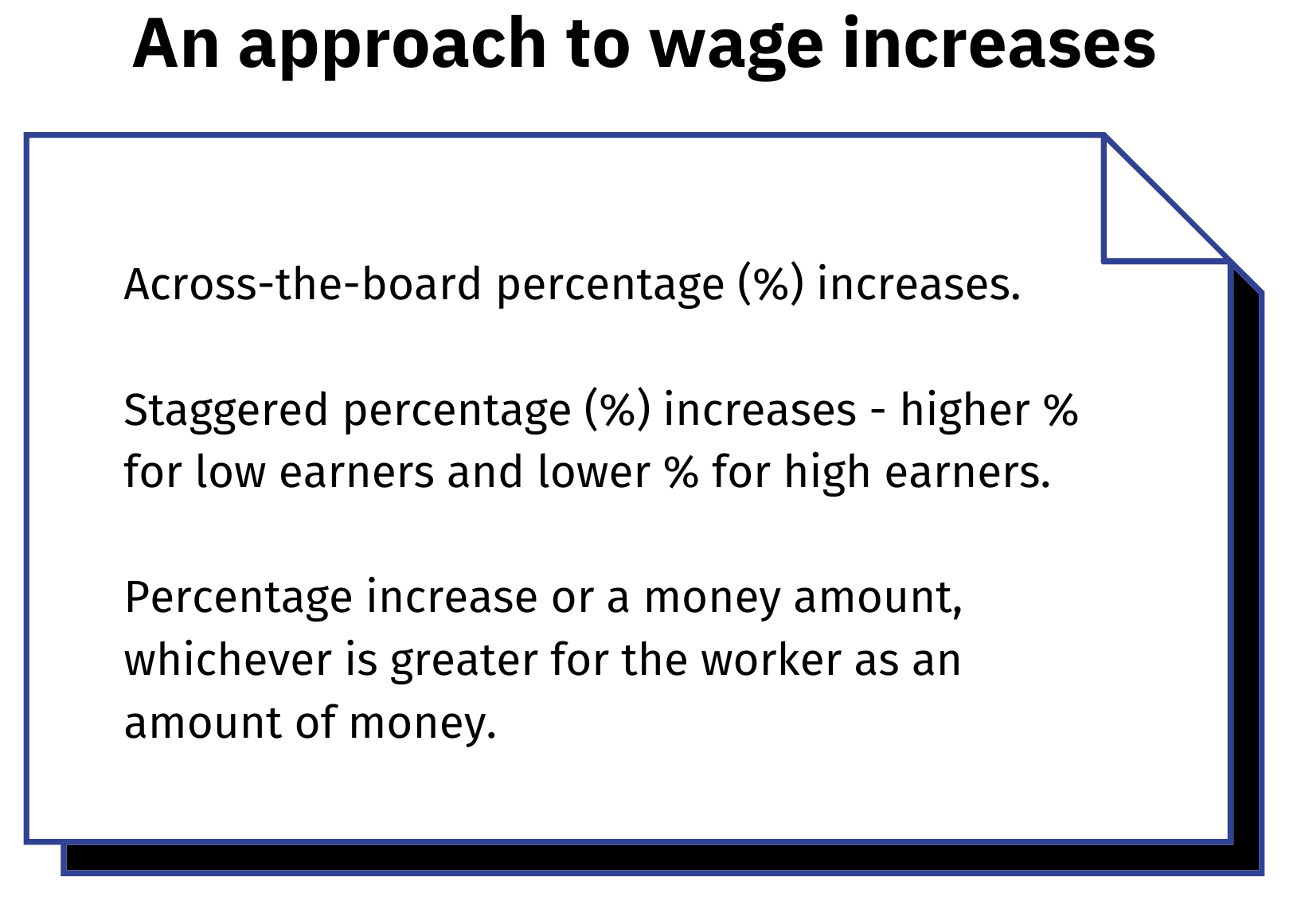The LRS Framework for Negotiating Conditions at Work equips union negotiators with the tools to effectively negotiate better terms, regardless of the workplace location or the level of organisation among workers. Negotiators are better prepared to secure favourable outcomes by understanding conditions at work, minimum standards, and collective agreements.
What are conditions at work?
Conditions at work are the rules and conditions of service that apply to workers in policy and practice. Some rules and conditions may be unwritten or even unspoken, although they are accepted and enforced.
Conditions at work always have a principle of wellbeing, fairness or a social value that underpins them. This principle forms the foundation of arguments in negotiations.
~ LRS Framework for Negotiating Conditions at Work. Tweet
A negotiator needs to know the minimum standards and associated values and principles for each condition at work.
Main types of conditions at work
Allowances
Some jobs and workplaces can place special demands on workers. Special allowances and accommodations help these workers to be effective. Shift, danger, travel, tool, living out, subsistence, standby, acting, and transport allowances are some examples.
Pay
The core principle is compensating workers for their labour and time invested. Examples: wages, annual increases, allowances, overtime, and regular and reliable monthly wages.

Hours of work
The principle behind hours of work is to guarantee decent pay through sufficient hours, provide predictable schedules for family and social commitments, ensure worker well-being and safety by limiting hours and compensation for anti-social hours, and support work-life balance through leave policies. Examples include overtime, guaranteed minimum hours, short-time, compressed working week, and shift work.
Health and safety at work
The principle of health and safety at work focuses on ensuring the well-being of workers while performing their duties. Negotiators look at having designated health and safety representatives representatives, hazard evaluations, and ensuring compliance with legal thresholds for safe working environments.
Legal norms and minimums
Reference the existing laws which establish minimum conditions and codes of good practice. Acts such as the Basic Conditions of Employment Act, the National Minimum Wage Act and the Labour Relations Act outline minimum standards.
Legal minimums provide a baseline. Effective negotiations aim to surpass these standards.
View additional workplace conditions in the LRS Framework for Negotiating Conditions at Work, which outlines 15 minimum conditions. The framework offers guidance on pinpointing areas open for negotiating or improving conditions in formal or informal settings.
RELATED RESOURCES
Video: How CEPPWAWU conducts its bargaining process







